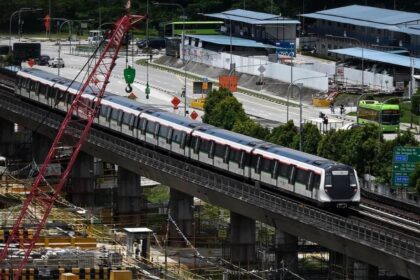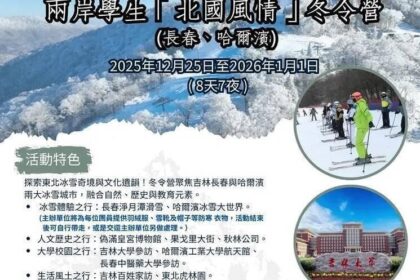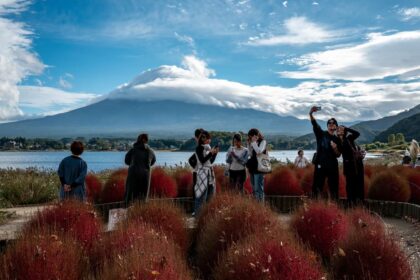Fresh dispute over a familiar flashpoint
Japan has reignited a long running territorial dispute with South Korea after expanding a state run museum in Tokyo that showcases the government’s position on disputed islands. The move was followed by a pointed political message. Jiro Akama, the minister in charge of territorial issues and chairperson of the National Public Safety Commission, reaffirmed Tokyo’s claim to the rocky outcrops known in Japan as Takeshima and in Korea as Dokdo during a press conference.
Akama’s remarks were direct, and they underscore how firmly Tokyo is tying domestic education and public outreach to its legal stance on contested territory. The minister said the islets are inherently Japanese under international law. He also promised more active messaging at home and abroad as visitors pass through the expanded galleries.
Japan refers to the islets as Takeshima. South Korea calls them Dokdo and administers them. Internationally they are often labeled the Liancourt Rocks. The twin outcrops lie roughly halfway between Japan and the Korean Peninsula in waters known as the Sea of Japan in Japan and the East Sea in Korea. South Korea has kept a small police unit and coast guard presence on the islets for decades and conducts routine patrols and maintenance there.
The National Museum of Territory and Sovereignty sits in Tokyo’s Chiyoda Ward. Beyond Takeshima or Dokdo, it also addresses the Northern Territories, which are controlled by Russia and claimed by Japan, and the Senkaku Islands in the East China Sea, which are controlled by Japan and claimed by China. The museum has been revamped with new multimedia features to boost engagement and to reach younger audiences.
Before detailing next steps, Akama framed the expansion as part of a broader communications push designed to anchor public understanding. He pledged continuity of that approach and described the museum as a key platform for explaining Japan’s view of law and history related to its borders.
What the new exhibit aims to show
The museum’s new Gateway Hall is designed as an entry point for visitors. It features a three sided screen that wraps around the audience, seating for viewing content, and digital stations with maps, charts, and historical documents. The aim is to present complex historical narratives in accessible formats that hold attention for people who may not be drawn in by dense text panels.
Exhibitions have moved beyond static displays. An immersive theater uses computer generated images to simulate flights over the islands or scenes that place viewers at sea level. The visual format attempts to situate the audience in the geography of each dispute, which curators say helps explain Tokyo’s arguments about history and law.
The hall also displays books and primary sources that support Japan’s positions on Takeshima, the Northern Territories, and the Senkaku Islands. Officials describe the renovation as a way to modernize presentation, attract more visitors, and standardize the narrative that students and the public encounter in a museum setting. It is an explicit effort to link public education with advocacy on sensitive territorial issues.
How Seoul responded
South Korea’s Ministry of Foreign Affairs issued a statement of strong regret over the expansion and urged Japan to shut the new facility. The ministry summoned a senior official from the Japanese Embassy in Seoul to lodge a formal protest and warned of a firm response against any action seen as harming Korean sovereignty over the islets.
In its formal language, Seoul reiterated its long standing legal position. A spokesperson for the Ministry of Foreign Affairs said the government views Dokdo as Korean in every relevant respect.
“Dokdo is clearly part of South Korean territory historically, geographically, and under international law.”
South Korean authorities emphasize that they exercise effective control over the islets, which includes a small police detachment and coast guard support. The government rejects any suggestion that the status of Dokdo is subject to negotiation or international adjudication and objects to Japanese references to an “illegal occupation.”
Where the law and history collide
Tokyo and Seoul marshal competing historical records and legal arguments to support their claims. Each government cites old maps, administrative notices, and maritime activities from earlier centuries. The disagreement is not just about documents. It is also about how both countries interpret the collapse of empire after World War II and which rules apply to islands whose status was not explicitly settled in postwar treaties.
Treaties and international adjudication
The status of the islets was not clearly defined in the 1951 Treaty of San Francisco, which shaped the postwar settlement in East Asia. A U.S. memo known as the Rusk documents suggested that Japan’s claim was not formally renounced in that treaty. That position informed U.S. neutrality on the sovereignty question and left the parties to press their claims directly.
Japan proposed referring the dispute to the International Court of Justice in 1954 and again in later years. South Korea declined, citing its belief that the issue is already settled and that the islets are Korean by history, geography, and international law. The ICJ can only hear such a case if both sides consent to the court’s jurisdiction. That consent has not been given by Seoul, which argues that taking a settled matter to court would be inappropriate.
In 1952, South Korea declared the Syngman Rhee maritime line and reinforced practical control around Dokdo, a policy that later hardened into the current posture of policing and administration. The United States has generally avoided taking sides on sovereignty, urging both allies to manage tensions and prevent incidents at sea.
Maps, names, and the 1905 incorporation
Japan incorporated the islets in 1905 during the Russo Japanese War, placing them under the jurisdiction of Shimane Prefecture. Tokyo argues that the rocks were terra nullius at the time and were lawfully incorporated. South Korea counters that the move came during the period when Japan was tightening control over Korea, culminating in annexation in 1910, and that any step taken in that context lacks legitimacy.
Both sides cite historical texts and maps. Korean scholars point to mentions of Usando in Joseon era records and argue that these references correspond to the Liancourt Rocks. Japanese scholars respond that Usando often meant other islands, or that premodern cartography is too imprecise to draw firm conclusions. The historical record contains many ambiguities, which allows both governments to present selective interpretations.
Why Dokdo resonates at home
Dokdo carries emotional weight in South Korea that goes beyond its size or resources. The islets are tied to memories of Japanese colonial rule from 1910 to 1945 and are often invoked as symbols of sovereignty and dignity. Civic groups organize awareness campaigns, school lectures highlight the issue, and politicians visit the rocks as a show of resolve. Many Koreans view challenges to sovereignty over Dokdo as challenges to national identity and historical justice.
In Japan, Takeshima is framed as one part of a wider set of unresolved territorial problems that also include the Northern Territories and the Senkaku Islands. Local authorities in Shimane Prefecture hold an annual Takeshima Day event each February to keep the claim on the public agenda. Central government participation is calibrated, often limited to a parliamentary vice minister, in an effort to avoid heavy diplomatic fallout while maintaining the official position.
Scholars who study national identity argue that territorial disputes in Northeast Asia are shaped by narratives that grow through schools, media, museums, and civic groups. These narratives can become embedded in how societies define themselves. That helps explain why statements by officials, textbook language, and museum exhibits draw intense scrutiny and swift reactions on both sides.
Recurring flashpoints and official documents
Japanese government publications regularly restate the claim to Takeshima. The annual defense white paper for 2025 did so for the twenty first consecutive year and grouped the issue with regional security challenges, including concerns about China, the war in Ukraine, and North Korea’s weapons programs. South Korea lodged protests through diplomatic and defense channels, summoning Japanese officials in Seoul to demand that the references be withdrawn.
Japan’s Diplomatic Bluebook for 2025 repeated the claim and described South Korea’s administration of the islets as an occupation. Seoul again protested, calling the language a provocation and reaffirming its position that Dokdo is Korean historically, geographically, and under international law. Officials in both capitals, while firm in their claims, also state that cooperation on urgent security matters must continue.
Symbolic events amplify tensions. Shimane Prefecture marked Takeshima Day for the twentieth time earlier this year, commemorating the 1905 administrative decision by a previous Japanese cabinet. South Korea responded with public objections and formal diplomatic protests. The islets themselves total about 0.2 square kilometer and are roughly 200 kilometers from either country. Their surrounding waters are rich fishing grounds, which adds a practical dimension to the quarrel.
Regional security and the role of allies
The dispute unfolds within a wider security environment. Japan and the United States are tightening coordination, including the creation of a new Joint Operations Command for Japan’s Self Defense Forces and adjustments to U.S. command structures in the region. Tokyo stresses that a secure Taiwan Strait and stable sea lanes are vital for its safety. Seoul, Tokyo, and Washington have increased trilateral exercises and information sharing aimed at deterring North Korean missile and nuclear threats.
Tensions with China over the Senkaku Islands and strained ties with Russia over the Northern Territories form the background to Tokyo’s renewed emphasis on border issues. The museum’s exhibits place Takeshima alongside those disputes, presenting a comprehensive narrative of Japan’s claimed territories. That approach can make an already sensitive bilateral issue feel connected to broader strategic friction in East Asia.
Chinese commentary has criticized recent Japanese rhetoric and policy moves, warning that heightened messaging on history and territory could unsettle Northeast Asia. South Korea’s political leaders have also urged Japan to approach history and border issues with greater care, arguing that genuine reflection would make cooperation more durable. Managing the Dokdo and Takeshima dispute in a way that avoids incidents at sea while keeping diplomatic channels active is a shared interest even when neither side shifts its legal stance.
Managing a dispute without resolution
A legal settlement remains distant, since South Korea does not consent to International Court of Justice jurisdiction on this matter and regards the case as closed. Practical steps can still reduce friction. Hotline protocols between coast guards help avoid miscalculation. Fisheries talks can set seasonal quotas and prevent confrontations. Clear rules for search and rescue, environmental monitoring, and scientific access can limit misunderstandings.
Public messaging also matters. Exhibits, textbooks, and official publications on both sides carry weight in domestic politics. Careful language that avoids inflaming the other government can make space for cooperation in areas where both countries benefit, including countering North Korean threats and strengthening supply chains. Neither side is likely to abandon its claim, but steady diplomacy and restraint can keep a long dispute from triggering a larger crisis.
Key Points
- Japan expanded its National Museum of Territory and Sovereignty in Tokyo and used the moment to restate its claim to the islets known as Takeshima in Japan and Dokdo in South Korea.
- Minister Jiro Akama said the islets are inherently Japanese under international law and promised stronger domestic and international messaging.
- South Korea protested, summoned a Japanese diplomat in Seoul, demanded the facility’s closure, and reiterated that Dokdo is Korean historically, geographically, and under international law.
- South Korea exercises effective control over the rocks with a small police and coast guard presence, while Japan continues to seek international attention to its claim.
- Japan’s 2025 defense white paper and Diplomatic Bluebook again asserted sovereignty over Takeshima, prompting new protests from Seoul.
- The islets, also known internationally as the Liancourt Rocks, lie roughly halfway between the two countries and sit near rich fishing grounds.
- Postwar treaties left the status of the islets undefined, Japan has proposed ICJ adjudication, and South Korea has refused consent to court jurisdiction.
- The dispute is intertwined with national identity, history education, and regional security dynamics involving China, Russia, North Korea, and the United States.












